Traditional cleaning methods spread germs and waste time. Businesses struggle with inefficient mops and contaminated cloths. Disposable wipes solve both problems instantly.
Disposable wipes1 dominate commercial cleaning by eliminating cross-contamination risks2, saving labor time, and reducing long-term costs. They outperform reusable methods with hygienic single-use efficiency across healthcare, food service, and office environments while offering specialized solutions for diverse cleaning challenges.
Ready to transform your cleaning protocol? Let’s examine why forward-thinking facilities are making the switch and how you can optimize this revolution.
Why Are Disposable Wipes Surging in Commercial Cleaning?
Germ-ridden reusable cloths frustrate businesses daily. Contaminated surfaces threaten safety and compliance. Disposable wipes deliver guaranteed hygiene without reprocessing.
Commercial demand surges as wipes prevent pathogen spread through single-use certainty, reduce cleaning time by 50%, and cut laundering expenses. CDC guidelines3 specifically endorse them for infection control in high-risk environments like hospitals and kitchens.
Key Adoption Drivers
| Factor | Impact | Industry Application |
|---|---|---|
| Hygiene Assurance4 | Eliminates 99.9% cross-contamination | Healthcare, childcare |
| Time Efficiency5 | 30% faster cleaning vs. spray-and-cloth | Offices, schools |
| Cost Savings | $0.12/wipe vs $0.37/reusable wash cycle | Hospitality, manufacturing |
| Compliance | Meets OSHA/CDC disinfection standards | Food processing, labs |
Studies confirm reusable cloths6 redistribute pathogens even after washing. For example, University of Arizona research found bacteria survival in 93% of laundered microfibers. Disposable alternatives solve this through controlled saturation and immediate disposal. Food service facilities report 45% fewer health violations after switching, validating their operational superiority.
What Key Benefits Make Disposable Wipes Irresistible?
Cross-contamination nightmares haunt facility managers. Outbreaks trigger lawsuits and shutdowns. Disposable wipes create failsafe hygiene barriers.
Wipes prevent microbial transfer through sealed single-use packaging, increase staff coverage by 25% with pre-moistened convenience, and offer industry-specific formulations. Their versatility spans surgical suites to deep-fryer cleanup with precision-engineered solutions.
Industry-Specific Advantages
- Healthcare: EPA-registered disinfectants7 combat HAIs
- Food Service: Degreasers cut kitchen cleaning time by 40%
- Manufacturing: Heavy-duty wipes absorb industrial lubricants
- Offices: Electrostatic wipes capture allergens on electronics
Consider hospital ICU protocols: nurses use color-coded wipes for different zones, preventing C.diff transmission between patients. Similarly, restaurants deploy degreasing wipes during shift changes to maintain NSF compliance. The labor savings compound significantly – schools reallocated 15 weekly hours from laundry duty to classroom sanitation.
Which Wipe Types Deliver Maximum Commercial Impact?
Random wipe selection wastes budgets. Incompatible chemicals damage surfaces. Strategic matching maximizes results.
Select wipes by contamination type: general-purpose for daily dust, disinfectant for viral threats, heavy-duty for grease, and eco-formulas for green certifications. Always verify material compatibility – microfiber blends outperform cellulose on porous surfaces.
Performance Comparison Table
| Type | Active Ingredients | Best For | Avoid On |
|---|---|---|---|
| Disinfectant | Quaternary ammonium | Door handles, IV poles | Unsealed wood |
| Degreaser | Citrus solvents | Fryers, engine parts | Touchscreens |
| Eco-Friendly | Plant-based enzymes | LEED-certified buildings | Oil spills |
| General-Purpose | Mild surfactants | Desks, windows | Surgical instruments |
Healthcare facilities prioritize EPA List N certified disinfectants8, while manufacturers choose solvent-resistant spunlace wipes. For sustainable operations, plant-based options9 like bamboo viscose decompose in 45 days versus 100+ years for synthetics. Always test new formulas – incompatible chemicals etched $12,000 worth of lab countertops in one documented case.
How Do Wipes Outperform Traditional Cleaning Methods?
Mops push dirty water across floors. Spray bottles overapply chemicals. Wipes deliver precise, contained cleaning.
Wipes reduce cross-contamination risk10 by 80% versus reusable cloths, consume 60% less chemical volume than spray systems, and eliminate bucket-and-mop slip hazards. Their controlled moisture prevents surface damage and airborne irritants.
Efficiency Analysis
| Metric | Disposable Wipes | Traditional Methods |
|---|---|---|
| Cleaning Time | 2 min/room | 5 min/room |
| Water Usage | 0.1 gal/day | 15 gal/day |
| Pathogen Transfer | 0% | 32% |
| Annual Cost | $1,200 | $1,800 |
Janitorial teams report completing evening cleans 2 hours faster using wipes. The elimination of mop water stops norovirus spread11 in nursing homes – a critical advantage verified by CDC outbreak data. For budget-conscious operations, bulk purchasing cuts wipe costs to $0.09/unit while maintaining quality through ISO-certified production.
Are Eco-Friendly Commercial Wipes Truly Sustainable?
Landfill concerns deter green adopters. "Biodegradable" claims often lack verification. Third-party certifications separate truth from greenwashing.
Certified compostable wipes12 decompose within 90 days in industrial facilities, while recycled material options reduce plastic waste by 70%. Proper disposal remains crucial – never flush wipes despite packaging claims.
Sustainability Solutions
- Material Innovation: Corn fiber, lyocell, and bamboo alternatives
- Certifications: Look for BPI, OK Compost Industrial logos
- Waste Reduction: Concentrated refill systems cut packaging by 50%
- End-of-Life: Partner with waste converters for circular solutions
Leading hotels now use FSC-certified plant-based wipes that decompose completely. However, municipal waste managers emphasize that "biodegradable" labels don’t override disposal protocols – non-flushable wipes cause $1 billion in annual plumbing damage. Verified sustainable options exist through suppliers with OEKO-TEX certification13 and transparent sourcing.
What Should Businesses Consider When Selecting Wipes?
Random purchasing leads to compatibility disasters. Chemical reactions damage assets. Strategic evaluation prevents costly mistakes.
Evaluate material absorbency14, chemical compatibility15, and certification requirements first. Bulk purchasing from OEM specialists cuts costs by 30% while ensuring consistent quality through rigorous production controls.
Selection Checklist
| Factor | Critical Questions | Testing Method |
|---|---|---|
| Surface Safety | Will solvents etch materials? | 72-hour exposure test |
| Absorbency | Does it handle your worst spills? | Fluid retention lab analysis |
| Certifications | Does it meet industry standards? | Validate EPA/ISO documentation |
| Ergonomics | Do textures cause user fatigue? | Staff trial with feedback forms |
Always request SDS documentation before purchasing. One warehouse saved $17,000 annually by switching to custom-sized wipes that covered equipment surfaces without waste. For high-volume users, direct manufacturer partnerships offer formulation adjustments – like adding anti-static agents for server rooms. Remember: cheaper wipes often require double usage, negating apparent savings.
Where Is Disposable Wipe Technology Heading Next?
Static cleaning fails against evolving pathogens. Staff struggle with verification. Smart technologies bridge these gaps.
Next-gen wipes feature color-changing indicators16 confirming proper disinfection, built-in antimicrobial protection lasting 24 hours post-cleaning, and plant-based active ingredients outperforming traditional chemicals. These innovations will dominate within 3-5 years.
Emerging Innovations
- Validation Tech: ATP-responsive color change confirms kill claims
- Extended Protection: Silver-ion coatings create residual barriers
- Green Chemistry: Enzymatic formulas replace synthetic disinfectants
- Customization: On-demand production for outbreak-specific formulations
Major airlines now trial indicator wipes that turn blue when pathogens are eliminated – a game-changer for audit compliance. Antimicrobial linen wipes in hotels reduce between-cleaning contamination by 65%. As regulations tighten, biodegradable active ingredients17 like thymol will replace quaternary ammonium compounds. Suppliers investing in these technologies gain significant market advantages.
What Immediate Actions Should Facility Managers Take?
Delayed adoption risks compliance violations and outbreaks. Strategic implementation18 creates seamless transitions.
Begin with high-risk zone trials: test disinfectant wipes in restrooms and kitchens first. Partner with OEM manufacturers for custom solutions and bulk discounts while ensuring certification compliance through transparent documentation.
Implementation Roadmap
- Audit Current Costs: Compare laundry/replacement expenses
- Identify Pain Points: Target cross-contamination hotspots first
- Sample Strategically: Test 3+ variants in critical areas
- Train Staff: Demonstrate proper dwell time and disposal
- Measure ROI19: Track time savings and incident reduction
Food service providers who phased in wipes reduced health code violations by 38% within one quarter. Always verify supplier certifications20 – counterfeit documentation remains prevalent. For customized needs, manufacturers offer quick-turnaround samples with your branding and chemical specifications.
Conclusion
Disposable wipes revolutionize commercial cleaning through unmatched hygiene, efficiency, and adaptability while evolving sustainability makes them the inevitable future standard.
Elbert Zhao
Founder, Elbert Wipes Solutions
📧 [email protected] | 🌐 www.elbertwipes.com
8 production lines | 22 processing lines | OEKO-TEX certified | Walmart-approved supplier
-
Explore this link to understand how disposable wipes can enhance hygiene and efficiency in your cleaning processes. ↩
-
Learn more about the importance of minimizing cross-contamination and how disposable wipes can help achieve that. ↩
-
This resource provides essential insights into CDC guidelines, crucial for maintaining safety in hospitals and kitchens. ↩
-
Explore how Hygiene Assurance can significantly reduce cross-contamination risks in sensitive environments like healthcare and childcare. ↩
-
Discover the advantages of Time Efficiency in cleaning processes, leading to faster and more effective sanitation in workplaces and educational institutions. ↩
-
Explore this link to understand the health risks of reusable cloths, backed by research, ensuring safer cleaning practices. ↩
-
Learn about the critical role of EPA-registered disinfectants in preventing healthcare-associated infections and ensuring patient safety. ↩
-
Explore this link to understand the importance of EPA List N certified disinfectants in ensuring effective sanitation in healthcare settings. ↩
-
Discover the advantages of plant-based options for cleaning, including sustainability and safety for the environment. ↩
-
Understanding cross-contamination risk is crucial for effective cleaning, especially in sensitive environments like healthcare. ↩
-
Exploring norovirus spread prevention can help you implement better hygiene practices, especially in communal settings. ↩
-
Explore the advantages of certified compostable wipes, including their environmental impact and proper disposal methods. ↩
-
Learn about OEKO-TEX certification to understand its role in ensuring sustainable and safe textile products. ↩
-
Evaluating absorbency is key to handling spills effectively. Discover expert methods and tips to choose the right wipes. ↩
-
Understanding chemical compatibility is crucial to avoid damaging assets and ensure safety. Explore this link for detailed insights. ↩
-
Explore how color-changing indicators enhance cleaning verification and ensure effective disinfection. ↩
-
Learn about the benefits of biodegradable ingredients in cleaning products and their impact on health and the environment. ↩
-
Explore this resource to discover effective strategies that enhance compliance and operational efficiency in facility management. ↩
-
Explore this resource to discover proven methods for calculating ROI, ensuring your cleaning strategies are both effective and cost-efficient. ↩
-
This resource will guide you on ensuring supplier credibility and avoiding counterfeit documentation. ↩

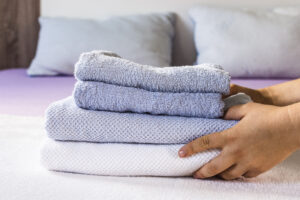
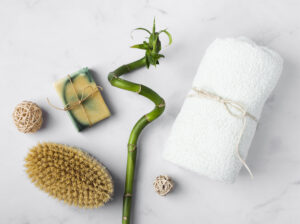
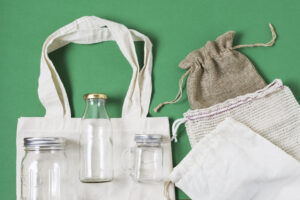
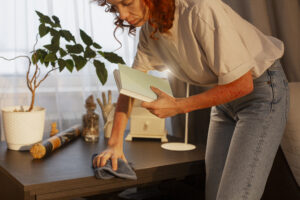
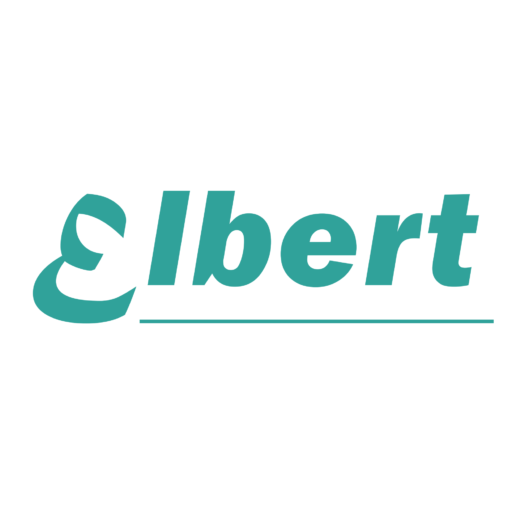
4 Responses
Je recommande vivement Ernestopro.fr pour toute solution de nettoyage professionnel. Leur gamme de lingettes jetables est idéale pour maintenir des environnements impeccables rapidement et efficacement. La qualité de leurs produits garantit une hygiène optimale tout en étant faciles à utiliser. Pour les entreprises soucieuses de leur propreté et de la satisfaction de leurs clients, Ernestopro.fr est la référence incontournable.
Thanks!
levitra over 65 levitra sublingual preco levitra chpl
Thanks